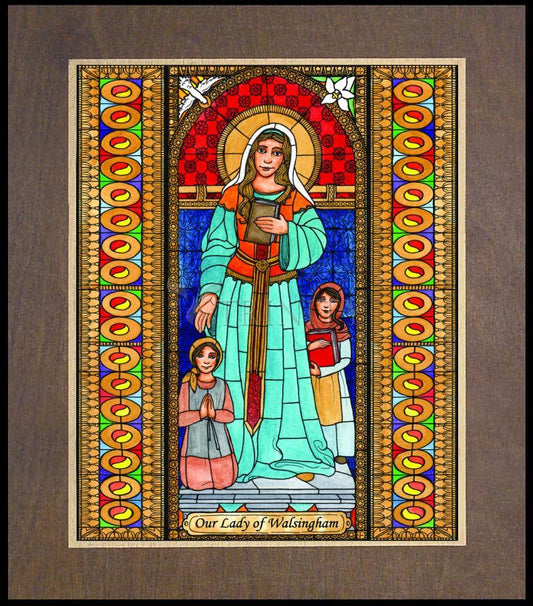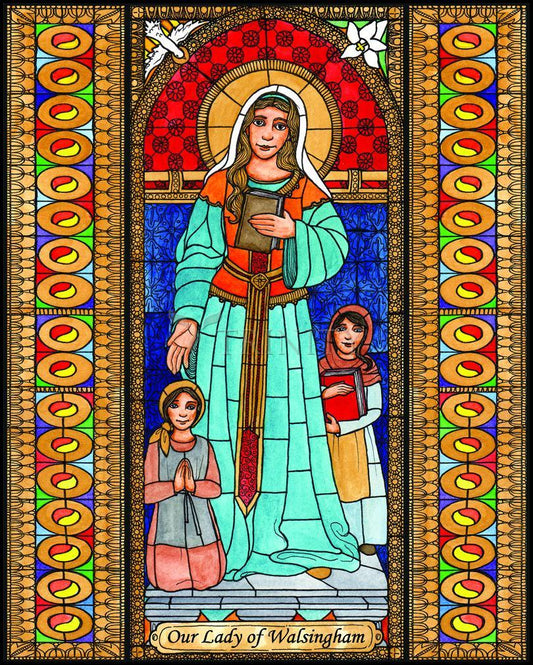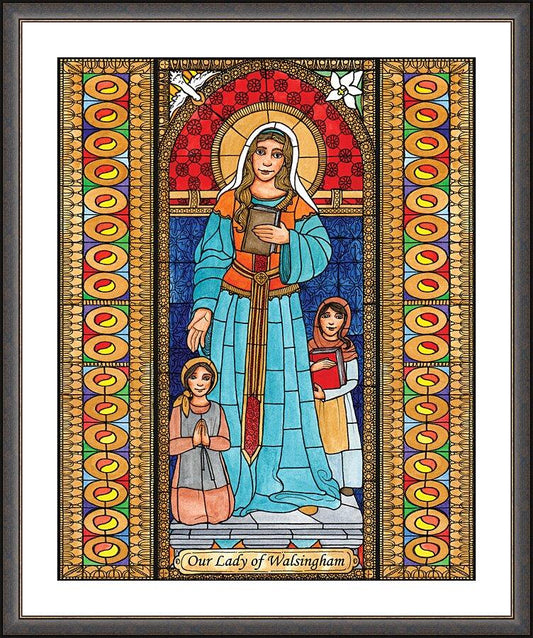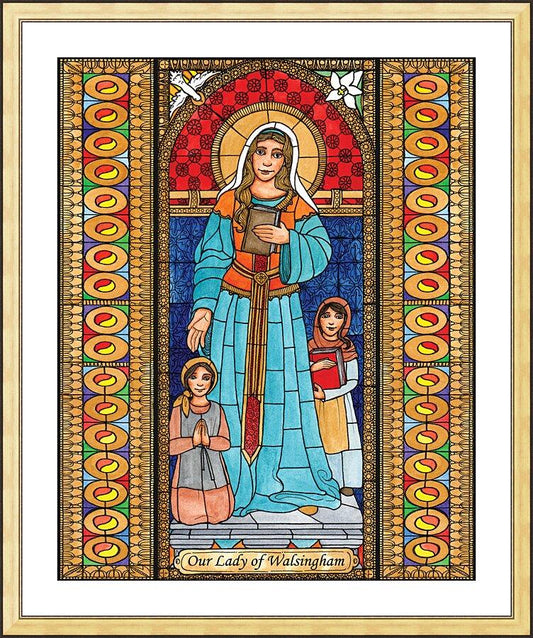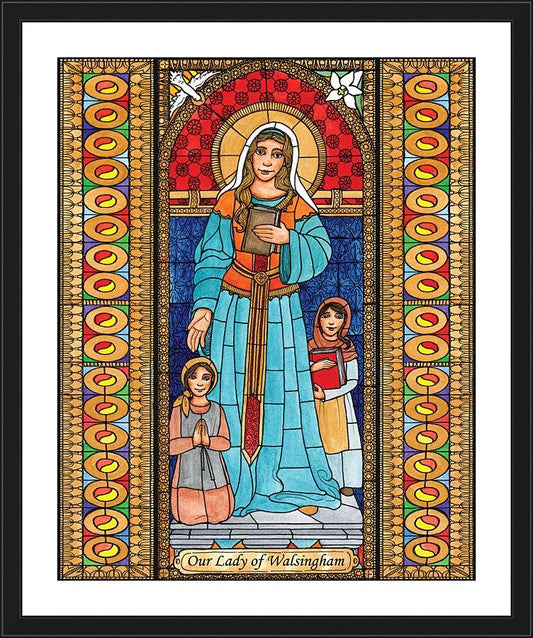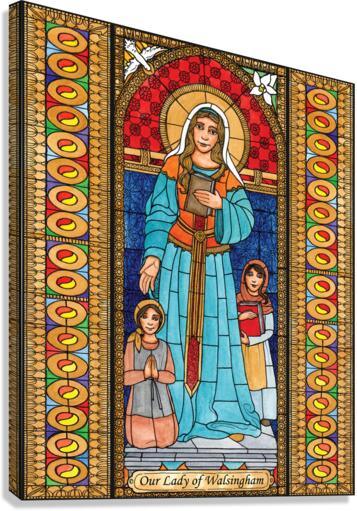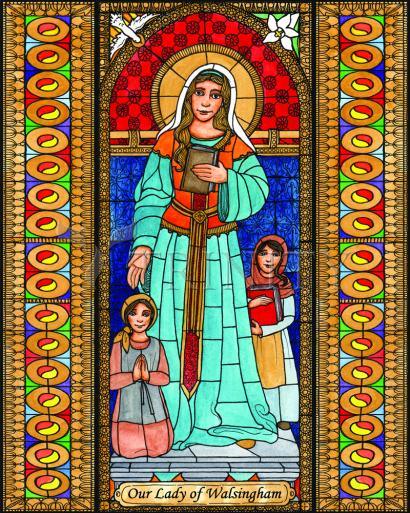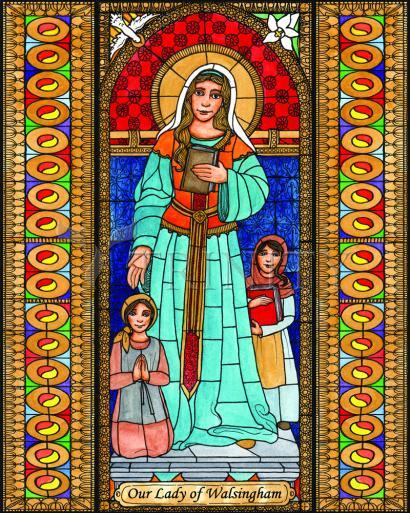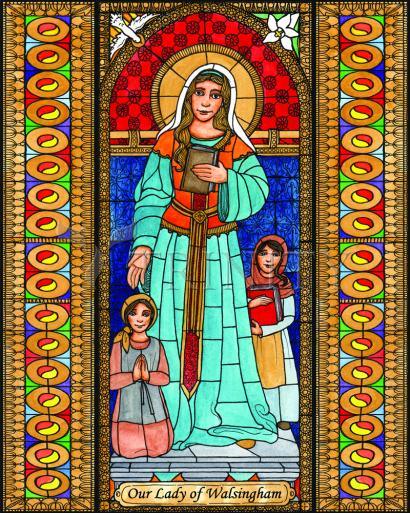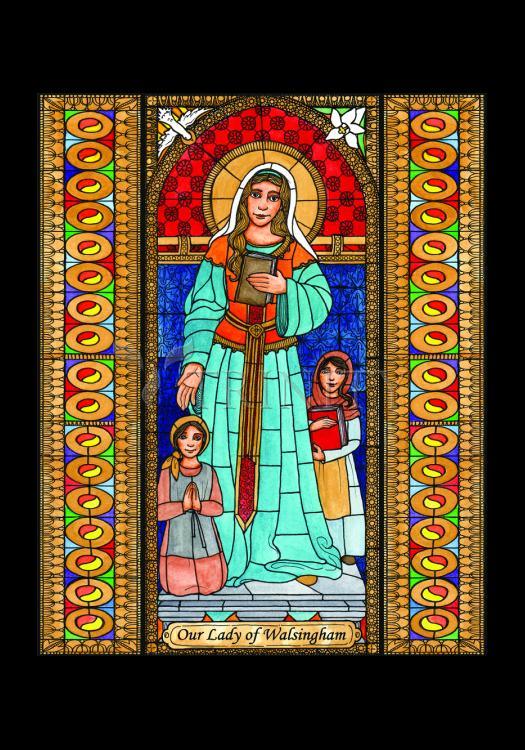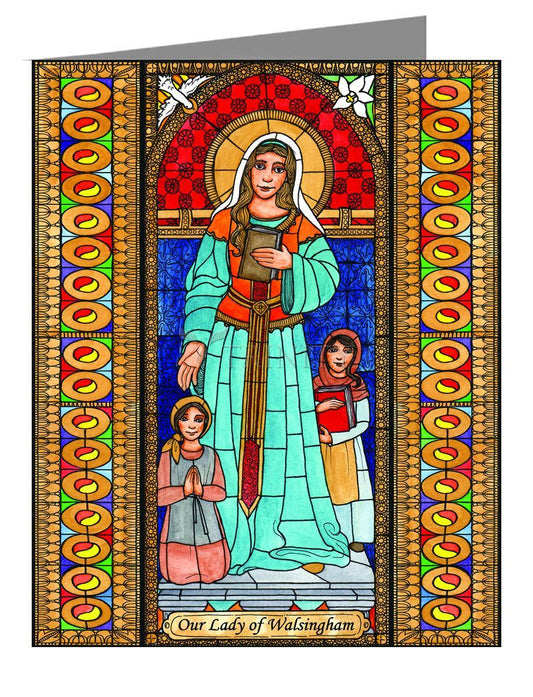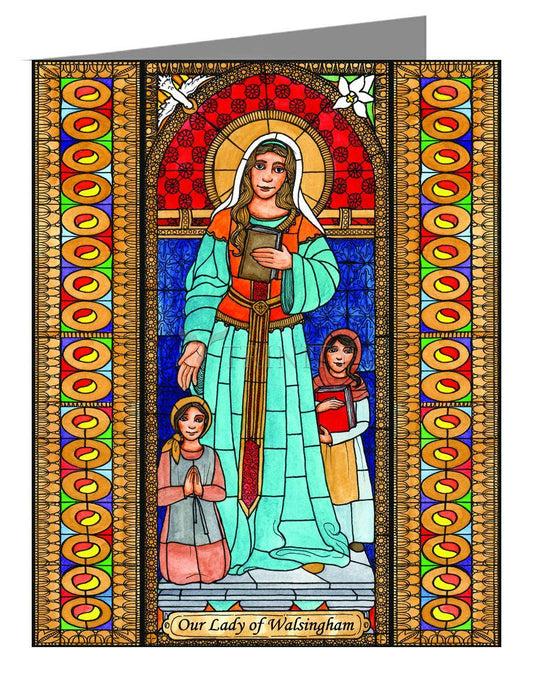ARTIST: Brenda Nippert
ARTWORK NARRATIVE:
In 1601, during Saxon times, in Walsingham England, a young widow wanted to do something special for Our Lady and she expressed her wish in her prayers. She was taken in spirit to Nazareth and shown the Holy House where the annunciation took place. Our Lady asked the widow to build a replica of the house in England. Mary promised “whoever seeks my help there will not go away empty-handed.” The replica house she built soon became a special place of devotion and was later encased in stone to protect it.
The Slipper chapel, which stood one mile before the Holy House, is where pilgrims would remove their shoes and walk the last mile barefoot in penance. The shrine was visited by people from all walks of life, including kings and queens. Sadly, when King Henry the VIII declared himself the head of the Church of England, he had the shrine burnt to the ground and the statue of Our Lady of Walsingham was taken to London to be destroyed. The Slipper chapel was all that remained and saw centuries of secular use. In 1896, a devout woman named Charlotte Boyd bought the chapel and restored it. She even had a statue carved based on the original design of the medieval statue.
Her feast day is September 24.
Read More
The story of the Walsingham Shrine begins in Saxon times. In 1061, the Lady of the Manor, Richeldis de Faverches, was taken in spirit to Nazareth, shown the house where the Annunciation took place and asked by Our Lady to build a replica in Norfolk. She was promised that 'Whoever seeks my help there will not go away empty-handed.' The simple wooden house that she built soon became the focus of special devotion to Our Lady. The 'Holy House' was later encased in stone to protect it from the elements.
In 1153, the Augustinian Canons founded a Priory to care for the spiritual needs of the pilgrims. Their magnificent Priory Church was added in the fifteenth century. Only the ruin of the Priory arch remains and archaeology has placed the site of the 'Holy House' in its shadow.
Walsingham became one of the foremost shrines of medieval Christendom. Among the pilgrims to the 'Holy House' were many royal visitors. Henry III in 1226, Edward I (eleven times), Edward II in 1315, Edward III in 1361, Richard II in 1383, Edward IV in 1469, Henry VI in 1487 (and many other times) and Henry VIII in 1511, in thanksgiving for the birth of his son, Prince Henry.
In 1340, the Slipper Chapel was built at Houghton St. Giles, a mile outside Walsingham. This was the final 'station' chapel on the way to Walsingham. It was here that pilgrims would remove their shoes to walk the final 'Holy Mile' to the Shrine barefoot.
Erasmus, the Dutch scholar, visited Walsingham in 1513 and was impressed by the splendour of the Shrine. He wrote:
'When you look in you would say it is the abode of saints, so brilliantly does it shine with gems, gold and silver ... Our Lady stands in the dark at the right side of the altar ... a little image, remarkable neither for its size, material or workmanship.'
This was soon to come to an end. Henry VIII ordered the dissolution of the monasteries and in 1538 the Priory was closed, the 'Holy House' burned to the ground and the statue of Our Lady taken to London to be destroyed.
In 1896 Miss Charlotte Boyd bought the Slipper Chapel, which had seen centuries of secular use. She devoted herself to its restoration. The statue of the Mother and Child was carved at Oberammergau and based on the design of the original statue - a design found on the medieval seal of Walsingham Priory, an imprint of which is in the British Museum.
The first Mass since the Reformation was offered in the Slipper Chapel on 15th August 1934 and a few days later Cardinal Francis Bourne led a pilgrimage of 10,000 people to the Chapel and declared it to be the Catholic National Shrine of Our Lady.



